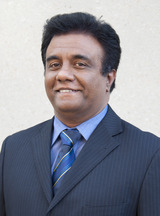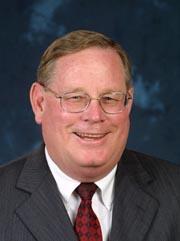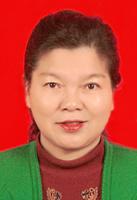Keynote Speakers
 Biography of Professor Saman Halgamuge
Biography of Professor Saman HalgamugeProf. Saman Halgamuge is a Professor of the Department of Mechanical Engineering and the school wide initiative on Biomedical Engineering and Associate Dean (International) for the Melbourne School of Engineering, The University of Melbourne. He completed B.Sc. Engineering (Electronics and Telecommunications) at the University of Moratuwa, Sri Lanka and went on to graduate with Dipl.-Ing and PhD degrees in Electrical Engineering at Technical University of Darmstadt, Germany.
Professor Halgamuge has an outstanding reputation for fundamental research in Big Data Analytics, Unsupervised Learning and Bio-inspired Optimization. His research has applications in Bioinformatics, Mechatronics and Sustainable Energy. He is the co-author of over 250 research papers including 6 books, 20 book chapters and 80 journal papers with over 4500 citations and h-factor of 28. He is listed as one of the most cited (top 1%) scientists in the last 10 years by ISI Essential Science Indicators. At Melbourne, he has completed supervision of 25 PhD students. He serves on the editorial boards of 6 journals including ACTA journal on Control and Intelligent systems and BMC Bioinformatics. He has chaired 12 conferences and served as a member of about 75 conference program committees.
Topic for Keynote SpeechBig Image Data: Applications in Molecular Distribution Recognition and Driver Fatigue Recognition
The presence and spatial distribution of bio-molecules in a living organism reveal a wealth of information on biological processes. Current data acquisition techniques can produce detailed information about the spatial distribution of molecules in a given biological sample (plant or animal). Molecules that are concentrated in specific spatial regions thus creating structured intensity images have a greater significance as they may leave footprints of nutrient/chemical flows in biological tissues. However, the extraction of these hidden significant molecular distribution patterns from high volume imaging data is a challenge. The first application will focus on an on-going PhD project attempting to face this challenge in collaboration with Metabolomics Australia and School of Botany.
Lack of concentration in a driver due to fatigue is a major cause of road accidents. The second application describes a completed PhD project to develop a video-based system to automatically detect driver fatigue and warn the driver, in order to prevent accidents. Ocular cues such as percentage eye closure are considered strong fatigue indicators; thus, accurately locating and tracking the driver’s eyes is vital. Tests were carried out based on two approaches to track the eyes: optical flow approach and classification based approach. Experiments show that both approaches can detect fatigue with reasonable accuracy, and that the classification approach is more accurate, although it needs a large amount of suitable training data.
 Biography of Professor C.E. Tapie Rohm Jr.
Biography of Professor C.E. Tapie Rohm Jr.Dr. C. E. Tapie Rohm Jr. completed his M.A. degree at the Brigham Young University in 1974 and PhD degree at Ohio University in1974. He is a professor of information management, computer information systems and technology. He was the founding Department Chair of his academic department, Information and Decision Sciences, and a founding Executive co-Director of the Inland Logistics, Commerce and Security Institute and former Executive co Director of the Empire Center for Entrepreneurship (which became ranked fourth nationally for graduate program under his leadership at California State University San Bernardino). He has been the Editor-in-Chief of the Journal of International Technology and Information Management, the Journal of International Information Management-JIIM and the Communications of the IIMA. He is on the Editorial Review Boards of the International Journal of Mobile Communications and Industry and Management.
Research Interests: The topics of Information Assurance and Security Management (Cybersecurity), Information Management (networking, data base, forecasting, planning, technology, analysis, web portal development, problem solving) and Strategic Management & Business Policy.
Topic for Keynote Speech:Doing Old Things in a New Way: Potential Innovations for Computer Engineering and Networking
 Biography of ProfessorYuhua Liu
Biography of ProfessorYuhua LiuProf. Yuhua Liu received her PhD degree in Computer Architecture from Huazhong University of Science and Technology. Currently, she is employed as the Professor and Doctoral Supervisor at the School of Computer, Central China Normal University, where she is responsible for teaching and research activities. Her current research interests include Computer Networks and Communications, Wireless Networks Technology, Complex Networks Theory, etc. Prof. Liu directed and took part in kinds of research items of Natural Science Foundation, 973 Subjects of China and Natural Science Foundation of Hubei Province, etc. She received varies awards such as the Major scientific and technological achievements prize, progress prize in scientific and collective technology of Hubei Province. She has published more than 100 papers in international journals and conferences that more than 60 of them were included by SCI or EI.
Topic for Keynote Speech:
A Power Management Algorithm Based on Multi-agents in WSNs.
Power management is a critical aspect of a successful WSN. Most energy of a node is consumed in collecting and transmitting data. Each sensor has a limited sensing range, thus agents need to be distributed in a way that they cover the whole environment; but usually there are some sensors which are very close to each other and hence, sense the same phenomena and create redundant data. The paper defined four different power thresholds, and when the sensor’s power meets each one of these thresholds a power reduction algorithm will try to reduce the amount of energy used by sensor. This paper also develops an approach to change sensing interval. The simulator demonstrates these approaches can decrease nodes’ energy consumption, and extend WSN’s life span.





